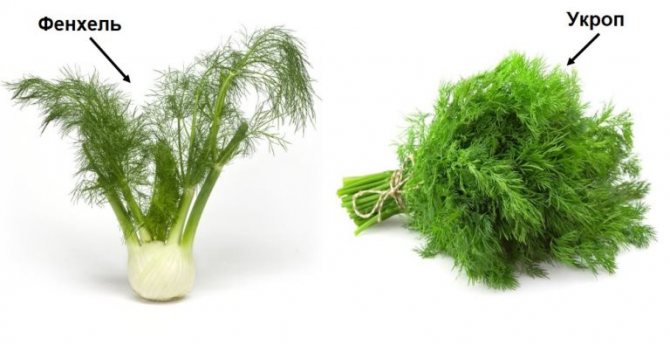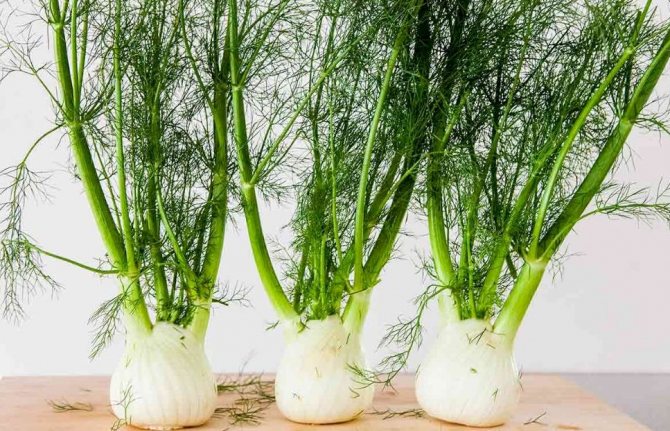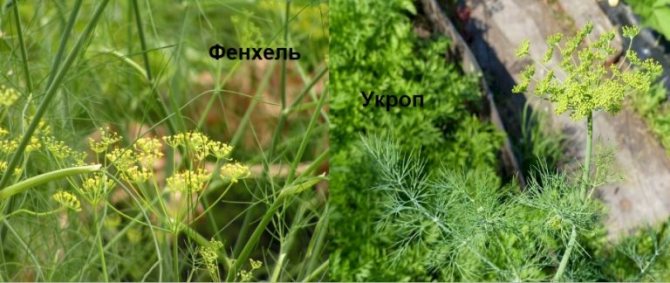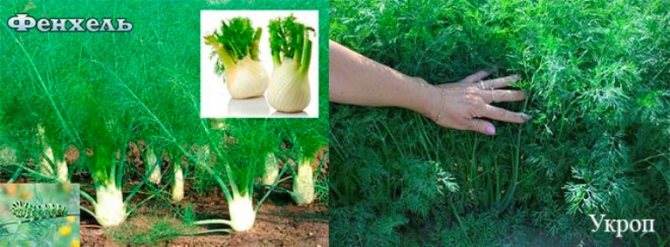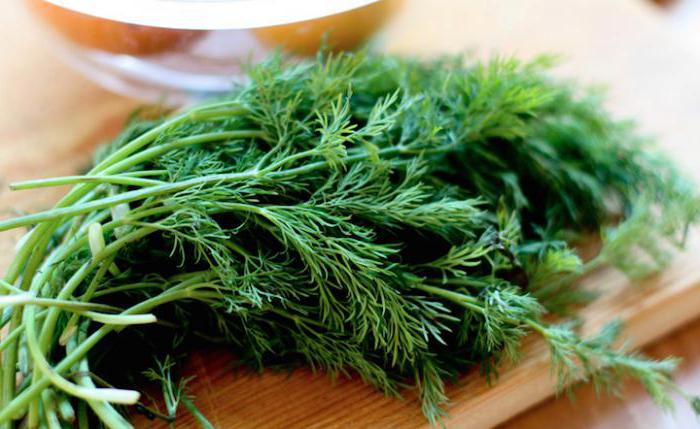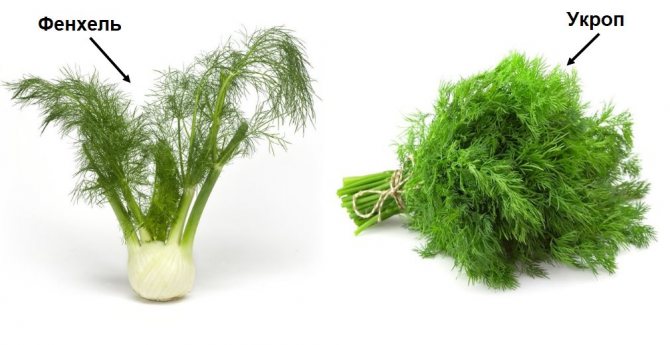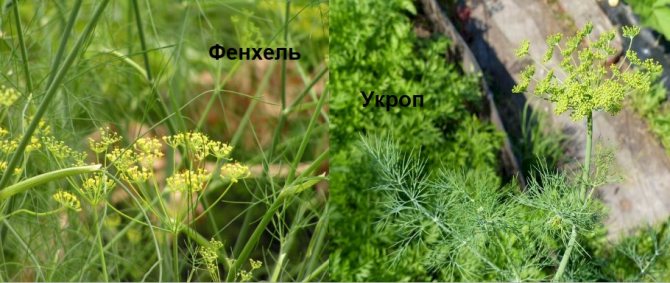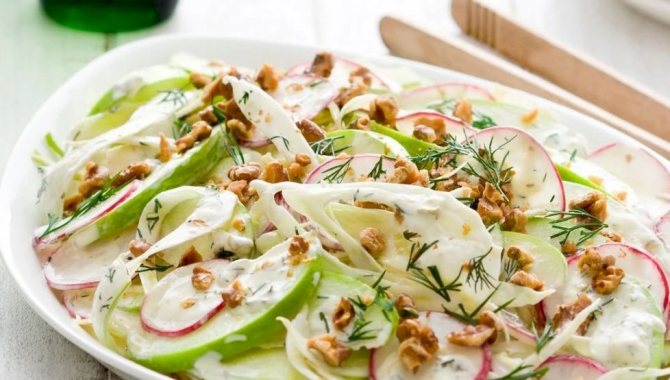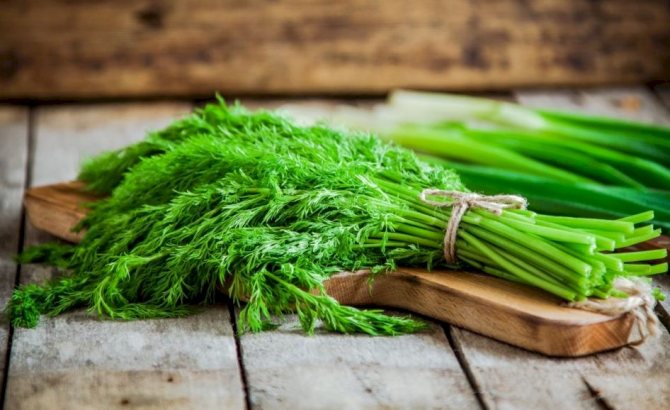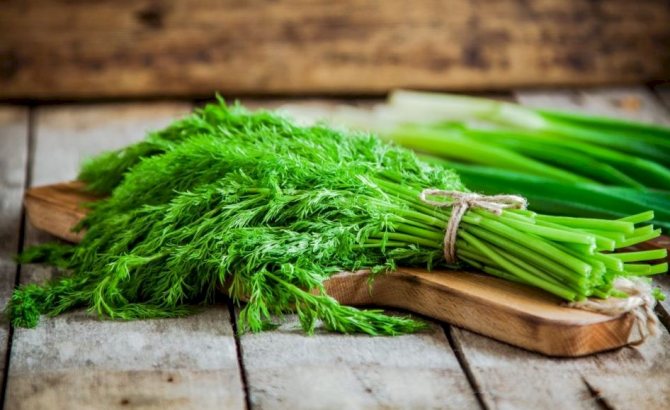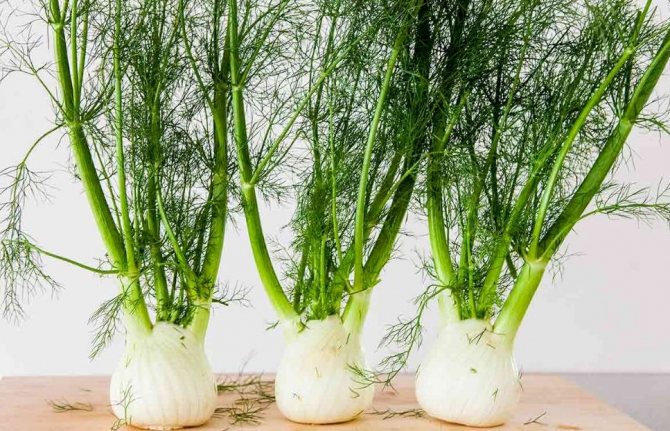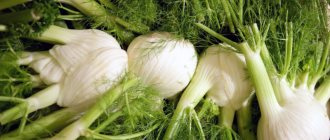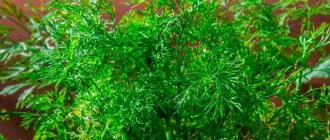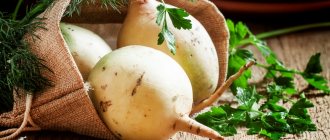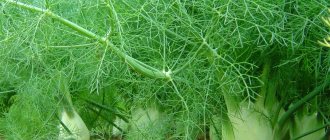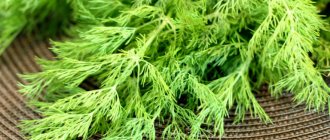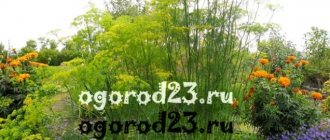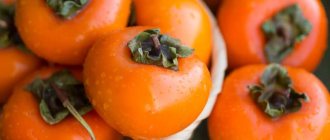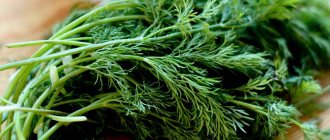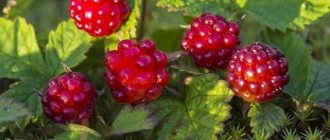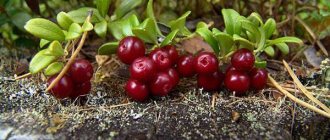Fennel and dill - what are the similarities
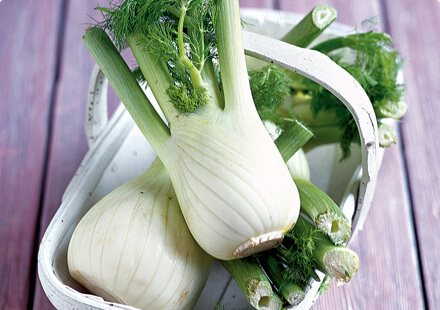
Fennel, like dill, belongs to the umbrella family. Their inflorescences are collected in small umbrellas, which are grouped into one large umbrella.
Both plants have a fairly noticeable height (from 1 to 2 meters). Only, fennel is a more bushy plant.
Fennel, dill can be grown in the garden. Moreover, these plants are grown as annuals.
Both fennel and dill are widely used in medicine and cooking. All plant parts are used in the preparation of a wide variety of dishes. The fruits are used in preparations for the winter: pickles (sauerkraut, tomatoes, cucumbers, zucchini), marinades. The fruits and greens of these plants are an excellent seasoning.
In industrial food production, seeds of both fennel and dill are added to sausages, cheeses, baked goods, and canned fish and meat. In Russia, dill is more widely used, fennel reigns in the countries of Europe and Asia.
The greens of both plants are used in the preparation of vegetable, fish, and meat dishes. People who lead an active lifestyle, watch their health, keep their bodies in great shape, have long recognized the benefits of fresh greens in their diets. Fresh "paws" of fennel and dill leaves can be added to salads, first courses, served as a decoration for appetizers, second courses.
Both plants belong to medicinal, are actively used in both official and alternative medicine, are part of a variety of medicinal collections.
Plant characteristics
It should start with an explanation, fennel and dill are the same thing or not. We will try to cover the issue in detail from all possible positions. Let's say right away that, of course, these are different herbs.
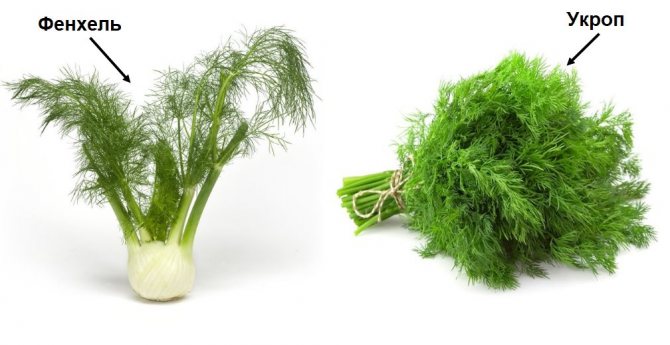

The statement "Fennel is dill" is erroneous, these are completely different plants. But they belong to the same family - Umbrella and reproduce by seeds. Very often they are confused in real life and in photos - they are really very similar in the following external characteristics:
- Long green stems;
- Yellow inflorescences in the form of umbrellas;
- Elongated feathery leaves, which are eaten.
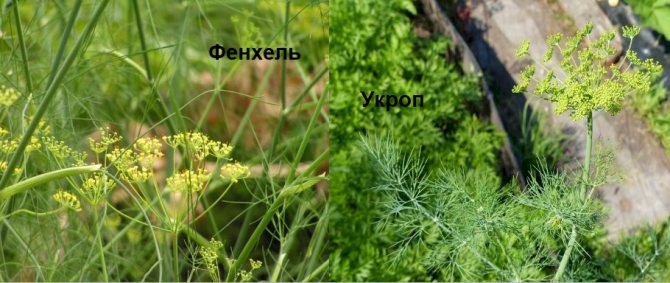

And fennel and dill are similar in a huge number of useful properties - both plants have the most beneficial effect on the human body. But there are still more differences between fennel and dill - we will take a closer look at the main parameters, we will figure out what is the difference between fennel and dill.
We also recommend: Svan salt
| Fennel | Dill |
| Perennial | Annual |
| Height 2.5 meters | Height 1.5 meters |
| Planted in early summer | Planted in spring, not afraid of cold weather |
| Rhizomes are very valuable | Rhizome is not eaten |
| Long seeds, break easily | Small seeds |
| It has been growing for several months | Ready to eat in just a week |
However, the main difference in the battle of fennel or dill is the smell and taste:
- The first plant is distinguished by the smell of anise, a sharp spicy taste with hints of mint and tarragon;
- The taste and smell of the second herb is sweet, rich and very familiar.
Now you know everything about how fennel differs from regular dill. It's time to talk about the benefits - the list of advantages is wide and not in doubt.
External difference between dill and fennel
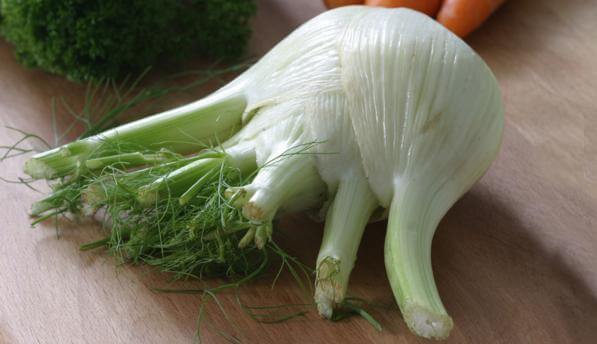

On closer inspection of these two plants, you can see quite significant differences in their appearance.
Dill, in comparison with fennel, has a hollow stem, which rarely reaches 1.3 meters in height. While fennel can reach 2 meters in size. In fennel, many processes depart from the base of the stem, forming a bush. Dill has one straight stem, dotted with leaves.
Dill is of one type - odorous dill, garden dill. Fennel can be found both ordinary and vegetable. Fennel in nature is a perennial plant, dill is an annual.
There are differences in the size and structure of the seeds. Fennel has larger seeds. Dill seeds have the shape of a flattened egg, the dimensions of which are up to 5 mm in length and 3.5 mm in width. In fennel, the fruitlets are an elongated ovoid seed up to 10 mm long and 3 mm wide.
Fennel
Fennel is a perennial plant belonging to the Celery family. The stems of fennel are branched and high, up to 2.5 meters. Outside, the stem is covered with a bluish bloom, and inside it has a porous structure. The leaves are threadlike and long, and the inflorescences of the plant look like yellowish umbrellas.
There are two types of this culture - vegetable fennel and ordinary. Vegetable fennel is easily recognized by its fleshy rhizome. The fruits of the plant are large and sweet, they are often used in various dishes.
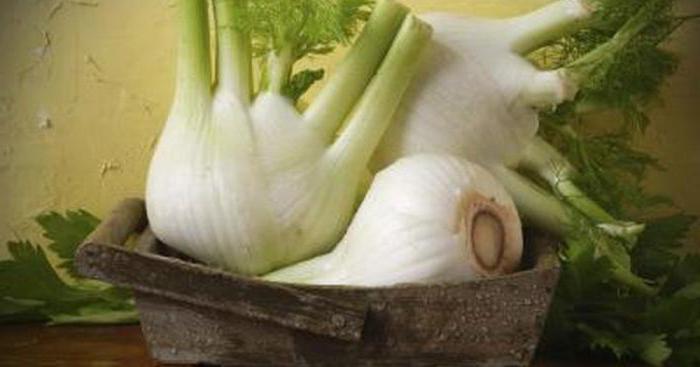

Fennel seeds have a characteristic aniseed scent, with hints of tarragon and peppermint. It is by seeds that the plant reproduces. Seeds are sown not earlier than April, and the fruits appear only by September. Fennel is afraid of cold weather, therefore it grows mainly in a subtropical climate, but in our latitudes you can find some of its varieties.
What substances and trace elements plants contain - similarities and differences
Dill fragrant
The seeds contain essential oil (about 5%), coumarins, chlorgenic acid, caffeic acid (3,4-dioxycinnamic acid), flavonoids, wax, resins, protein, nitrogen, fiber, fatty oil.
The essential oil of the fruit consists of S-carvone (up to 60%), dillapiol (up to 40%), fellandrene, alpha-limonene, betta-pinene, myristicin.
The greens and the fruits of fragrant dill contain vitamins of group B, vitamin C, vitamins of group P, provitamin A, Ca (calcium), Fe (iron), P (phosphorus), folic acid, and other macro and microelements.
Fennel ordinary
The composition of ordinary fennel seeds includes essential oil (about 6-7%), protein substances, fatty oil.
Fennel fruit essential oil consists of 60% anethole, alpha-pinene, alpha-fellandrene, dipentene (limonene), camphene, timolol, estragol, or methylchavicol (about 10%), ethylfenchan, fenchone (about 20%).
The content in fennel of a large part of anethole determined its medicinal properties, as a healer of the digestive system. Anethol acts on the intestinal walls, turns on its motility, revives the digestive system.
The presence in fennel, mainly in fruits, of estragole, the isomer of anethole, and the content of anethole contribute to a positive effect on women's health. In fact, these substances are natural hormones.
The presence of dipentene (limonene) in fennel allows the removal of carcinogenic substances from the human body.
The second plant, fragrant dill, contains large amounts of vitamin C in the leaves and seeds. Dill greens contain more vitamin C than lemon. This circumstance contributes to the fact that odorous dill is a powerful oxidant, it relieves inflammation, has an antimicrobial effect, and promotes rapid wound healing.
Coumarin, contained in dill, thins the blood, so dill in folk medicine is advised to be used for thrombosis.
The content of S-carvone in dill fruits gives its seeds the smell of caraway.
The presence of dillapiol in dill leads to the existence of contraindications to the use of this plant in large quantities. Since dillapiol refers to psychotropic substances.
Dill
This spice is a "classic" of garden beds and has been used by mankind for a long time. It is difficult to imagine both a summer cottage and a dining table without dill. This plant is more popular than fennel, but in many ways it is similar.
Description
Outwardly, dill is very similar to a wildly growing "brother". The same tall, branched, erect stem with longitudinal ribbed stripes and waxy bloom. At first glance, the leaves are also similar - sessile or petiolate, divided into lobules. If you don't really look closely at the flowers, then they are also identical - small, five-part, forming umbrellas. It is difficult to distinguish among themselves the seeds - grayish-brown droppings.
Dill in the garden
Beneficial features
Basically, garden dressing is used as a spice for pickling, preserving and salting vegetables. The essential aroma and flavor enhances the quality of salads and hot dishes. But dill is valued no less than fennel for its healing properties - they have an almost identical useful composition.
Among the essential oils of dill, carvone should be distinguished. Fatty oils are represented by glycerides of linoleic, oleic, petroselinic, palmitic acids. It attracts a spicy culture with a rich vitamin and mineral set.
Dill water for babies is made from the fruits, it helps to establish intestinal motility. Decoctions and infusions have a calming and antispasmodic effect, expectorant and vasodilator, diuretic and choleretic.
From colic in the tummy
Treat with dill broths dyspepsia in children. The composition of dill waters is useful for cystitis in adults, relieves flatulence and abdominal pain. Every property inherent in fennel can be attributed to garden dill.
Fennel and dill - differences in medicinal use
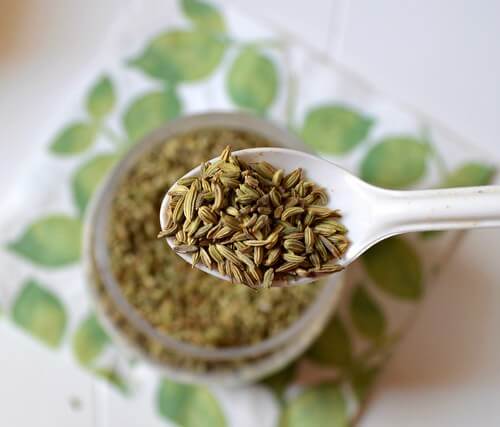

Despite the apparent similarities, fennel and dill have completely different properties. If one plant is used for one disease, then the second for another.
In fennel, all parts of the plant are used in medicine: fruits, herbs, root. In dill, seeds are valuable in the treatment of diseases.
The main areas of application of fennel in medical practice:
- bowel problems (bloating, weakening of intestinal motility, atony, constipation);
- respiratory tract diseases (bronchitis, pneumonia, persistent cough, asthma);
- gynecological diseases (violation of the female cycle, immaturity of female organs, hormonal disorders, menopause, decreased milk production when feeding infants);
- diseases of the gallbladder and biliary tract (stones and sand in the gallbladder, cholecystitis, inflammatory processes in the bile ducts);
- diseases of the genitourinary system (kidney stones, inflammation of the ureters, inflammatory processes in the organs of the reproductive system);
- eye diseases (conjunctivitis, inflammation, cataracts);
- metabolic disorders (obesity, lipid metabolism disorders, high cholesterol);
- childhood diseases (colic in infants, undeveloped digestion, flatulence);
- skin diseases (acne, acne, first wrinkles, cellulite).
The field of application of dill in medicine:
- diseases of the cardiovascular system (high blood pressure, vasoconstriction, heart weakness, the initial stage of angina pectoris, arrhythmia);
- genitourinary system (inflammation, sand and kidney stones, edema, cystitis);
- respiratory diseases (laryngitis, tracheitis, tonsillitis, hiccups);
- diseases of the digestive system (spasms of the intestines, stomach, loss of appetite; hemorrhoids, putrefactive processes in the intestines, pancreatitis);
- diseases of the nervous system (poor sleep, nervousness, agitation, insomnia, depression, neuroses, nervous vomiting);
- allergies (skin irritation, itching).
Recipes with fennel ordinary for the treatment of various diseases
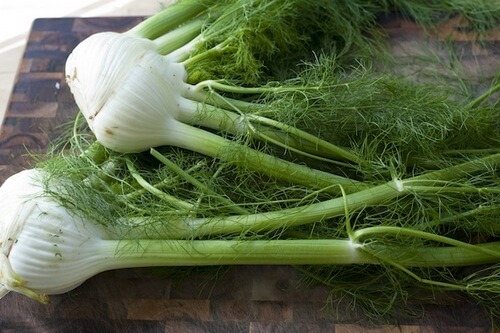

Prescription for bowel disease (spasms, bloating, increased gas production). It is recommended to take 1 tsp. fruits or dry greens of fennel, brew with 1 cup boiling water (250 ml), insist, strain. Drink half a glass before meals 2-3 times a day.
Recipe for obesity, increased body weight, for those who want to lose weight. You need to take 2 tsp. fennel seeds, 2 tablespoons green tea, a few slices of lemon, you can lime. Add all the ingredients to a teapot for brewing tea, or other utensils, pour 300-400 ml of boiling water, let it brew, take before meals in several steps.
Recipes with fragrant dill for the treatment of various diseases
Prescription for hemorrhoids. Take fresh dill, scald with boiling water, cool to a comfortable temperature and apply to the sore spot. Such lotions relieve inflammation, itching, and reduce hemorrhoids.
Prescription for inflammatory processes in the genitourinary system. It is necessary to take the fruits of dill (1 tsp), brew 1 cup boiling water (250 ml), insist. Drink 2-3 sips during the day. This recipe relieves puffiness, removes excess fluid from the body, has a diuretic property.
Dill and fennel are so different and so similar. These are healing plants, with a reasonable use of which, you can get rid of many diseases and ailments. Health to all!
What's better
Dill and fennel are not the same thing, each culture has its own characteristics. It is difficult to say unequivocally what exactly is worth planting on your site, because the further purpose of its use plays a significant role in the choice of a specific crop: for example, for daily culinary purposes it is better to plant dill, and when growing herbs for the preparation of cosmetics or healing infusions, you can pay more attention fennel.
Fennel has a rich chemical composition, thanks to which beneficial properties for the human body are achieved. It performs the action:
- carminative;
- antispasmodic;
- expectorant;
- antimicrobial.
Dill water, which helps babies with colic, is made from fennel. It eliminates increased gas formation, relieves abdominal cramps, and relieves pain.
Fennel tea will help moms to improve the production of breast milk. It has a slight choleretic effect, relieves flatulence, stops fermentation in the intestines. This is a useful remedy for bronchitis, colds, as it facilitates the separation of phlegm.
It has similar properties to medicines made from fennel, but their properties are less pronounced. An infusion of dill seeds is used as an excellent diuretic with a mild effect.
Fennel is fundamentally different from dill. They have different properties, chemical composition, taste, smell, cultivation method. Although the plants are similar in appearance, they can even be confused.

